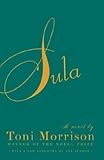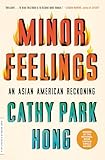I was thinking of calling 2021 a non-year. I turned 40 in February and marked it by gazing at the camellia bushes at a nearby garden, and because I hadn’t spent much (or any) time alone since that fateful day in March 2020, the visit was blissful. Still, it wasn’t the celebration I had imagined for that milestone birthday. By the end of March, I was fully vaccinated, but, for most of the year, my kids couldn’t be—and the youngest, who is two, is still waiting. All three of them have been back in school full time since mid-August, although each week I steel myself for a call from the principal—it’s already happened twice—telling me there’s a positive case in the classroom. An unexpected 10 days without childcare is enough to keep any parent on edge. (“Writing! Is this just a hobby of mine now?” I sometimes want to cry out, and do.) Life in 2020 felt scary and small; this year it feels liminal, perhaps irrelevant. As in 2020, I’m still scared: less by Covid and more by…everything else. What fun.
What does one read and enjoy in a non-year?


 In January, I started reading and rereading Toni Morrison’s novels because I wanted a project. One of relevance, perhaps. There are 11 and I figured I could read them all in 2021. I certainly could have, until I realized I didn’t want to rush through them, to conquer them as if cramming for an exam. Instead, I slowed down and picked one up when I was in the mood for Morrison’s rich prose and vivid, often brutal, worlds. I’ve read five so far, in order of publication: The Bluest Eye, Sula, Song of Solomon, Tar Baby, and Beloved. My favorite was The Bluest Eye (a reread) although all of them deranged my brain as I dipped into their syntactical feats. I could not get over how experimental The Bluest Eye was, with its perspective shifts and refusal to bend to the reader’s expectations. Instead, it bent me.
In January, I started reading and rereading Toni Morrison’s novels because I wanted a project. One of relevance, perhaps. There are 11 and I figured I could read them all in 2021. I certainly could have, until I realized I didn’t want to rush through them, to conquer them as if cramming for an exam. Instead, I slowed down and picked one up when I was in the mood for Morrison’s rich prose and vivid, often brutal, worlds. I’ve read five so far, in order of publication: The Bluest Eye, Sula, Song of Solomon, Tar Baby, and Beloved. My favorite was The Bluest Eye (a reread) although all of them deranged my brain as I dipped into their syntactical feats. I could not get over how experimental The Bluest Eye was, with its perspective shifts and refusal to bend to the reader’s expectations. Instead, it bent me.
All of Morrison’s characters have bodies, are embodied, and there are moments of sexiness, just as there are moments of humor and celebration that don’t get talked about when we talk about Morrison’s work. Take this sentence from Sula, for instance, about men’s pants and the treasures within: “The cream-colored trousers marking with a mere seam the place where the mystery curled.” That phrase, “marking with a mere seam”—I’ll live off it for days.
(Something I discovered in 2021: eating a weed gummy, waiting 30 minutes, drawing a bath, and reading two pages of Toni Morrison in the hottest water. Nothing like swimming in a single paragraph for far too long.)
 This year, I read Minor Feelings: An Asian American Reckoning by Cathy Park Hong and I keep wishing I hadn’t done so because I want to read it for the first time. This essay collection about being the daughter of Korean immigrants in America is snarling and nuanced, and Hong keeps making herself vulnerable on the page, wading into the thorniest of topics, including depression, family dysfunction, making art, and, of course, race. Hong made me laugh out loud—”The Korean girls were so moody they made Sylvia Plath seem as dull as CSPAN”—and the essay about Oberlin College (also my own alma mater) sent me into a delicious fugue state of memory. I want more books like this: unafraid to think through the most complicated of topics with honesty and rage, its complexity a recognition that nothing will be solved easily or assimilated into a slogan. The project is deeper and more wide reaching than that.
This year, I read Minor Feelings: An Asian American Reckoning by Cathy Park Hong and I keep wishing I hadn’t done so because I want to read it for the first time. This essay collection about being the daughter of Korean immigrants in America is snarling and nuanced, and Hong keeps making herself vulnerable on the page, wading into the thorniest of topics, including depression, family dysfunction, making art, and, of course, race. Hong made me laugh out loud—”The Korean girls were so moody they made Sylvia Plath seem as dull as CSPAN”—and the essay about Oberlin College (also my own alma mater) sent me into a delicious fugue state of memory. I want more books like this: unafraid to think through the most complicated of topics with honesty and rage, its complexity a recognition that nothing will be solved easily or assimilated into a slogan. The project is deeper and more wide reaching than that.
 Midway through this strange non-year, I read a book my oldest, who is 10, loved and asked me to read: The Miraculous Journey of Edward Tulane by Kate DiCamillo. Last year, I had caught Ann Patchett’s appreciation of DiCamillo’s work in the New York Times Book Review, so I was already curious. Patchett writes:
Midway through this strange non-year, I read a book my oldest, who is 10, loved and asked me to read: The Miraculous Journey of Edward Tulane by Kate DiCamillo. Last year, I had caught Ann Patchett’s appreciation of DiCamillo’s work in the New York Times Book Review, so I was already curious. Patchett writes:
“I couldn’t remember when I had read such a perfect novel. I didn’t care what age it was written for. The book defied categorization. I felt as if I had just stepped through a magic portal, and all I had to do to pass through was believe that I wasn’t too big to fit.”
 Apparently, my son agreed about the novel’s perfection. Like Patchett, I read the book in a single evening and, like her, I felt like I’d slipped into a magical portal. The novel is about, yes, you guessed it, Edward Tulane, who is a rabbit made “almost entirely of china,” and DiCamillo’s elegant, heart-crushing tale follows him from owner to owner. He is a doll, so he has no agency, a curious premise for a fictional hero. And yet. And yet! At the outset, Edward is a detached observer of his circumstances, and doesn’t think much of them beyond feeling himself “to be an excellent specimen.” Over the course of the novel he comes into a deeper understanding of love. Many degrading things happen to this poor bunny doll—he is crucified at one point, making the symbolism quite clear—and throughout the language is simple, refined, and, like another of my favorite books, Stoner by John Williams, it’s utterly devastating in its simplicity and refinement.
Apparently, my son agreed about the novel’s perfection. Like Patchett, I read the book in a single evening and, like her, I felt like I’d slipped into a magical portal. The novel is about, yes, you guessed it, Edward Tulane, who is a rabbit made “almost entirely of china,” and DiCamillo’s elegant, heart-crushing tale follows him from owner to owner. He is a doll, so he has no agency, a curious premise for a fictional hero. And yet. And yet! At the outset, Edward is a detached observer of his circumstances, and doesn’t think much of them beyond feeling himself “to be an excellent specimen.” Over the course of the novel he comes into a deeper understanding of love. Many degrading things happen to this poor bunny doll—he is crucified at one point, making the symbolism quite clear—and throughout the language is simple, refined, and, like another of my favorite books, Stoner by John Williams, it’s utterly devastating in its simplicity and refinement.
Hey, look, maybe this year wasn’t a bust after all!


 I haven’t even begun to cover all the books I loved (the muscular prose of Matrix by Lauren Groff, and the forthcoming Mouth to Mouth by Antoine Wilson, mischievous and sly, and the utter delight that is Good Company by Cynthia D’Aprix Sweeney, to name a few.) Maybe it wasn’t a non-year. I’m here, aren’t I? I’m still writing. I’m about to be 41. My kids, goddess willing, are in school, two of the three of them are vaccinated.
I haven’t even begun to cover all the books I loved (the muscular prose of Matrix by Lauren Groff, and the forthcoming Mouth to Mouth by Antoine Wilson, mischievous and sly, and the utter delight that is Good Company by Cynthia D’Aprix Sweeney, to name a few.) Maybe it wasn’t a non-year. I’m here, aren’t I? I’m still writing. I’m about to be 41. My kids, goddess willing, are in school, two of the three of them are vaccinated.
We carry on. We read. We’ll do it again next year. Won’t we?
More from A Year in Reading 2021 (opens in a new tab)
Don’t miss: A Year in Reading 2020, 2019, 2018, 2017, 2016, 2015, 2014, 2013, 2012, 2011, 2010, 2009, 2008, 2007, 2006, 2005









